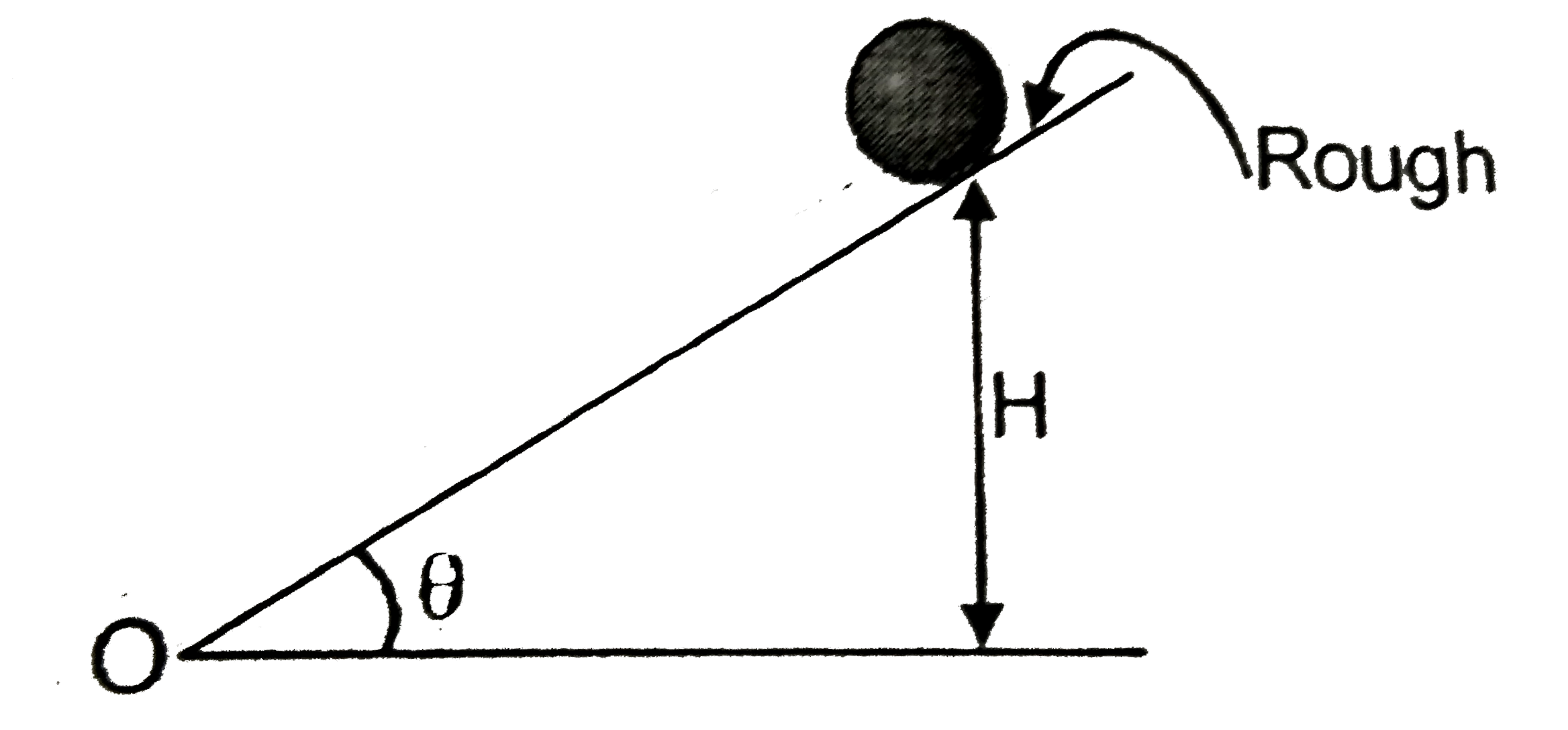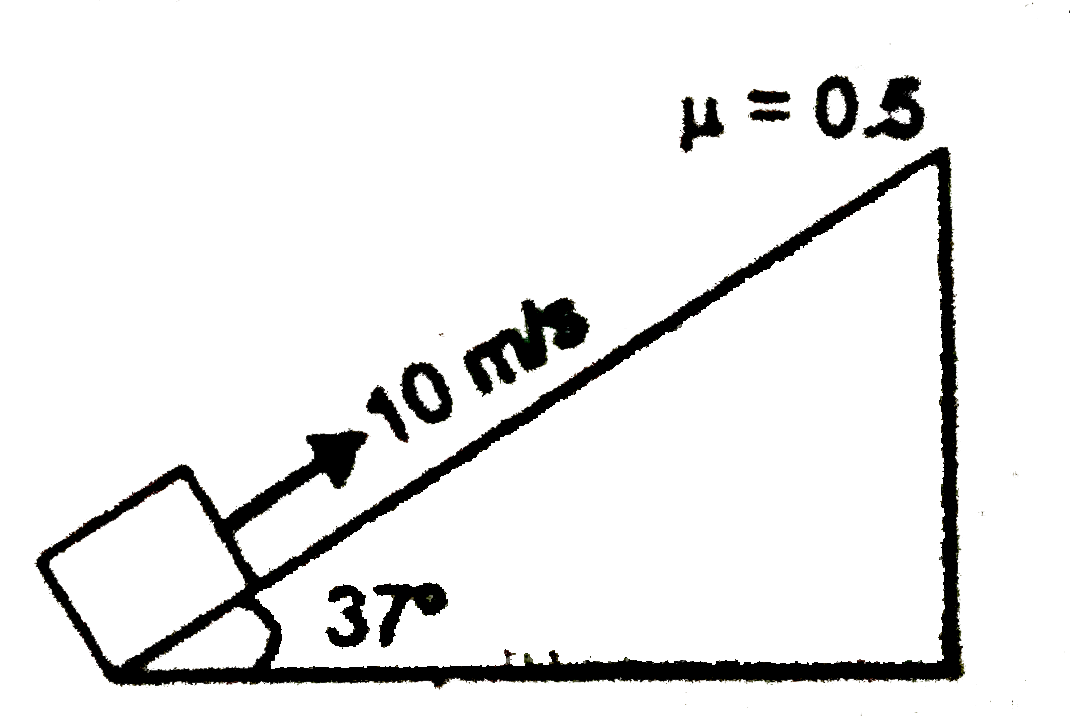A wheel A is connected to a second wheel B by means of in extensible string, passing over a pulley C, which rotates about a fixed horizontal axle O, as shown in the figure. The system is released from rest. The wheel A rolls down the inclined plane OK thus pulling up wheel B which rolls along the inclined plane ON.
![A wheel A is connected to a second wheel B by means of in extensible string, passing over a pulley C, which rotates about a fixed horizontal axle O, as shown in the figure. The system is released from rest. The wheel A rolls down the inclined plane OK thus pulling up wheel B which rolls along the inclined plane ON. Determine the velocity (in m/s) of the axle of wheel A, when it has traveled a distance s = 3.5 m down the to be slope. Both wheels and the pulley are assumed homogeneous disks of identical weight and radius. Neglect the weight of the string. The string does not
slip over C. [Take alpha =53^@ and beta=37^@]](https://d10lpgp6xz60nq.cloudfront.net/physics_images/BMS_VOL2_C03_E01_311_Q01.png)
Determine the velocity (in m/s) of the axle of wheel A, when it has traveled a distance s=3.5m down the to be slope. Both wheels and the pulley are assumed homogeneous disks of identical weight and radius. Neglect the weight of the string. The string does not
slip over C. [Take α=53∘ and β=37∘]
The correct Answer is:2
Applying conservation of energy
mgs(sinα−sinβ)=12Iω2+2(12mv2+12Iω2)
where ω=v/r & I=mr2/2
Putting values & solving
mgs(sinα−sinβ)=74mv2
∴v=2√17gs(sinα−sinβ)
=√10×3.57(45−35)=2m/s
Similar Questions

System is shown in the figure. Velocity of sphere A is 9 ms. Find the speed of sphere B.
View SolutionIf a solid cylinder rolls down an inclined plane, then its:
View SolutionA thin uniform circular ring is rolling down an inclined plane of inclination 30∘ without slipping. Its linear acceleration along the inclined plane is :
View SolutionA cylinder rolls down an inclined plane of inclination 30∘, the acceleration of cylinder is
View SolutionA wheel A starts rolling up a rough inclined plane and another identical wheel B starts rolling up a smooth plane having same inclination with the horizontal. If initial velocity of both the wheels is same then:
View SolutionA solid ball of mass 'm' is released on a rough fixed inclined plane from height H. The ball will perform pure rolling on the inclined plane. Then

View SolutionA block is given velocity 10 m/s along the fixed inclined as shown in figure from the bottom of the inclined plane. Find the total distance travelled along the inclined plane. If the coefficient of friction is equal to 0.5

View SolutionA thin uniform circular ring is rolling down an inclined plane of inclination 30∘ without slipping. Its linear acceleration along the inclined plane will be
View SolutionA thin uniform circular ring is rolling down an inclined plane of inclination 30∘ without slipping. Its linear acceleration along the inclined plane will be
View SolutionA solid cylinder is rolling down a rough inclined plane of inclination θ. Then
View Solution

